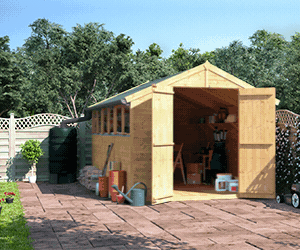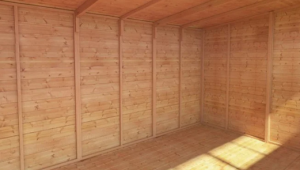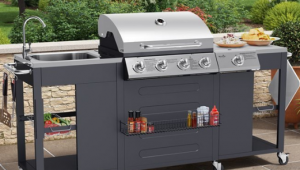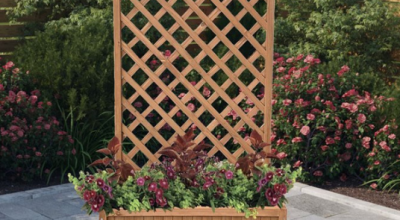Jump to:
Today, we delve into the vital but often misunderstood world of pruning. Understanding how, when, and where to do so is key to maintaining the health and beauty of your plants. From flowering shrubs to towering trees, each plant has its unique needs. This guide will simplify pruning, helping your garden thrive all year round. So, grab your gardening gloves and shears and turn your green space into a flourishing oasis. Let’s get pruning!
What is Pruning?

Pruning is the selective removal of specific parts of a plant, such as branches, buds, or roots. This maintenance aims to improve its health, aesthetics, and productivity. It’s a crucial gardening practice that benefits plants in several ways. By removing dead or diseased wood, pruning prevents the spread of decay and pests. It also encourages new growth and shapes plants for a more pleasing appearance. And increase fruit and flower yield by directing energy to the most productive parts.
Contrastingly, trimming generally refers to the cutting back of plants. This method maintains a desired shape or size and is often used for hedges and lawns. Pruning is typically more selective and focused on the plant’s health and growth. Meanwhile, trimming is more about maintaining a neat, uniform appearance. Both are essential for a well-maintained garden but serve different purposes.
Tools and Safety

(Image Credit: Wikimedia Commons)
For successful pruning, having the right gardening tools essentials is crucial. Here are some key ones:
- Hand shears: Ideal for cutting small branches and stems. Bypass shears are perfect for precise cuts. They feature curved blades that bypass each other like scissors. Meanwhile, anvil shears work well for dead wood.
- Loppers: These long-handled shears offer greater reach and leverage. Suitable for branches up to two inches thick.
- Pruning saws: Necessary for thicker branches. Available in various sizes, these saws make clean cuts without damaging the plant.
Safety tips
- Always wear protective gloves and eyewear.
- Keep tools sharp to ensure clean cuts and reduce strain.
- Use the correct tool for the branch size to avoid injury.
- Never overreach or use tools on unstable surfaces.
- Clean tools after use to prevent disease spread.
When to Prune

Spring
Ideal for pruning summer-flowering plants and late-flowering shrubs. Prune just as new growth begins, providing a boost in energy for developing buds. Early spring is also perfect for cutting back ornamental grasses and perennials.
Summer
Best for spring-flowering plants right after their blooms fade. This allows time for new growth that will flower next season. Light pruning of hedges and evergreens is also suitable to encourage dense growth.
Fall
Generally, avoid heavy pruning as new growth might not harden before winter. However, you can remove dead or diseased wood.
Winter
Optimal for pruning deciduous trees and shrubs when they are dormant. Pruning in late winter, just before spring growth starts, is often ideal. In this period, wounds heal quickly with new growth.
Life cycle considerations
- Flowering time: Prune after blooming to avoid cutting off flower buds.
- Dormancy: Many plants benefit from winter pruning when they are dormant. This reduces stress and promotes vigorous spring growth.
- Plant health: Diseased or damaged branches should be pruned immediately. It’s recommended to do this, regardless of the season, to prevent further harm.
How to Prune

Pruning techniques
- Inspect the plant: Begin by examining the plant’s structure. This lets you identify dead, diseased, or overcrowded branches.
- Clean cuts: Use sharp tools to make clean, angled cuts just above a bud or branch junction. This allows for healthy regrowth.
- Thinning: Remove select branches to improve light and air circulation. This encourages healthy growth and reduces disease risk.
- Shaping: Trim for a desired shape, considering the plant’s natural form.
Specific plant types
- Roses: Prune in late winter or early spring. Remove dead or weak canes, open up the centre for light, and cut back the remaining canes by about one-third.
- Fruit trees: Prune in winter for structure and summer to control size. Remove vertical branches and thin out crowded areas.
- Hedges: Shape in early spring. Make the base wider than the top for even sunlight exposure.
Common methods
- Topping: Cutting off the top of a tree is not generally recommended as it can harm the tree.
- Deadheading: Removing spent flowers to promote more blooms and prevent seed production.
- Shaping: Trimming plants to maintain a specific form or size. Often used for hedges and ornamental plants.
Where to Prune
When identifying parts of a plant that need pruning, consider the following:
- Dead or diseased branches: Look for branches that show signs of disease, decay, or damage. These should be pruned to prevent the spread of disease and improve plant health.
- Overlapping or rubbing branches: These are branches that cross against each other. If overlooked, they can cause wounds and invite disease. Remove one of the conflicting branches.
- Suckers and water sprouts: These vertical growths sap energy from the main plant. They should be removed.
- Crowded branches: Thin-out areas where branches are too dense. This will help improve air circulation and light penetration.
- Old or non-productive stems: In flowering or fruiting plants, cut older stems. Meaning those that no longer produce well. This is to redirect energy to younger, more productive parts.
Aftercare and Maintenance

Caring for plants after pruning
- Watering: After pruning, ensure the plant receives adequate water. This helps the plant recover and supports new growth. However, avoid overwatering, which can be detrimental.
- Fertilising: Apply a balanced fertiliser to provide essential nutrients and encourage healthy regrowth. Wait a few weeks post-pruning for fertilisation. This is especially important for major cuts to allow the plant to heal.
- Mulching: Apply mulch around the base of the plant. This helps retain moisture, regulates soil temperature, and adds nutrients.
- Monitoring: Keep an eye on the pruned plant for signs of stress or disease. Prompt action can prevent further issues.
Disposing of pruning waste responsibly
- Composting: Turn healthy plant debris into compost, enriching your garden soil.
- Recycling centres: Some areas have green waste recycling centres. Check local regulations.
- Garden waste bins: Use designated bins for garden waste if available in your area.
- Avoid burning: Burning garden waste can be harmful to the environment. Plus, it’s often illegal, so opt for more sustainable disposal methods.
Round-up
Effective pruning is a blend of art and science, vital for the health and beauty of your garden. By understanding the right techniques and timing, you can:
- enhance plant growth
- improve flowering and fruiting
- maintain the desired shape and size of your plants
Remember to care for your plants post-pruning and responsibly dispose of the waste. Embrace these pruning practices, and watch as your garden flourishes.
Optimise your gardening experience by keeping tools secure and organised in a shed. Explore our diverse selection of garden storage solutions at BillyOh. Coming up next in your reading journey: How to Clean Garden Tools













What do you think ?